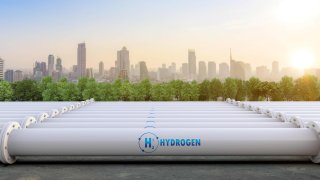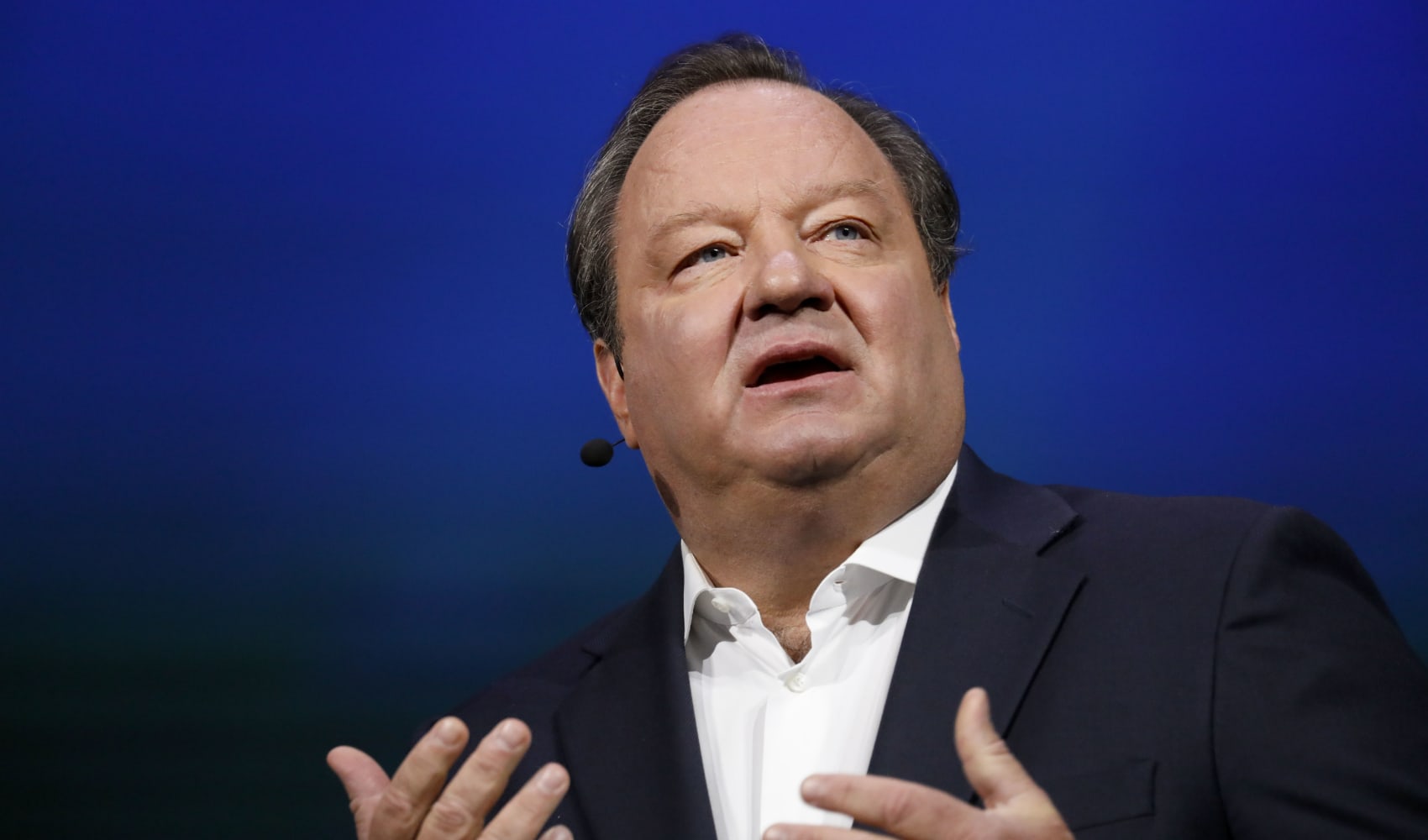
- President Joe Biden and Secretary of the U.S. Department of Energy Jennifer Granholm will on Friday announce seven regional "hydrogen hubs" which are, collectively, eligible for up to $7 billion in federal funding, according to senior White House administration officials.
- The hubs are located in geographic regional hubs and stretch from California and the Pacific Northwest to the Heartland, Mid-Atlantic and Midwest.
- The goal of the hubs is to spur the hydrogen economy across the United States. Hydrogen is seen as a critical component to the United States' decarbonization strategy.
President Joe Biden and Secretary of the U.S. Department of Energy Jennifer Granholm will announce on Friday seven regional "hydrogen hubs" which are collectively eligible for up to $7 billion in federal funding, according to senior White House administration officials.
The hydrogen hubs are being funded from money included in the Bipartisan Infrastructure Law, which President Biden signed into law in November of 2021.
Hydrogen is the simplest element and the most abundant on earth, but it seldom exists on its own, so generally has to be split from other atoms (as in the case of water, or H2O). This can be done with an electrolyzer powered by electricity. Hydrogen can also be produced from natural gas in a process called steam methane reforming.
Get New England news, weather forecasts and entertainment stories to your inbox. Sign up for NECN newsletters.
Hydrogen is currently used to make fertilizer and in various industrial processes, particularly in the petrochemical industry. But because hydrogen emits no carbon dioxide used in a fuel cell to make energy, it is part of the Biden administration's strategy for reducing greenhouse gases in industries like long-haul trucking, maritime cargo shipping, and airplane travel. Hydrogen is also seen as a potential energy storage vehicle to balance out the intermittency inherent in renewable energy sources, like wind and solar.
That said, hydrogen is only a good tool for reducing CO2 emissions if it can be produced with minimal emissions itself — today, that often does not happen. The new hubs will be focused on that goal.
The seven hydrogen hubs stretch across 16 states and are organized according to geographic regions that have a particular strength when it comes to developing and growing the hydrogen industry in the United States. The hubs are not single facilities, but refer to a collection of linked assets that will work together to develop the domestic hydrogen economy in the United States.
Money Report
"The hub design in itself is important because it creates clusters of supply and demand that are close to one another, minimizing the need to tackle challenges that would come with moving hydrogen long distances," Adria Wilson, the hydrogen policy lead at Breakthough Energy, told CNBC.
The $7 billion in federal funding will catalyze an estimated $43 billion in private sector investment, according to comments made by senior White House administration officials on a call with reporters on Thursday afternoon.
The federal funding will be dispersed as the regional hubs meet incremental stage-gate milestones, senior White House administrators said. But the manufacturing hubs are all going to spur job creation, a theme Biden has repeatedly advertised as a co-benefit of developing the clean economy.
The seven selectees are as follows:
Appalachian Hydrogen Hub: The Appalachian Hydrogen Hub encompasses parts of West Virginia, Southeast Ohio, and southwest Pennsylvania and will use the large quantities of natural gas in the region. It's located in the industrial heartland and will provide hydrogen for industrial applications across the United States. It's also at a transportation crossroads, which will allow the hydrogen to be readily transported.
California Hydrogen Hub: The California Hydrogen Hub spans from Southern California to Northern California and encompasses three ports: Los Angeles, Long Beach and Oakland. Ports are very important because hydrogen is considered a prime candidate for decarbonizing the shipping industry. Also, hydrogen will be key in heavy-duty trucking and trucks transport goods from ports.
Gulf State Hydrogen Hub: The Gulf State Hydrogen Hub will be centered in Houston, Texas, and will cover most of the Gulf Coast and southeast Texas. Texas has large quantities of energy to use in producing hydrogen.
Heartland Hydrogen Hub: The Heartland Hydrogen Hub is hosted in Minnesota and includes a significant presence in North Dakota and South Dakota, and takes advantage of the uses the very inexpensive and abundant wind resources to make clean hydrogen. The hydrogen generated in the Heartland Hydrogen Hub will be at least partly used for agricultural purposes, as hydrogen is a key component in making fertilizer.
Mid-Atlantic Hydrogen Hub: The Mid-Atlantic Hydrogen Hub spans parts of Pennsylvania, Delaware and New Jersey and will take advantage of repurposed infrastructure along the Delaware River.
Midwest Hydrogen Hub: The Midwest Hydrogen Hub is in Illinois, northwestern Indiana and southwestern Michigan and will produce hydrogen from, among other sources, nuclear power. Also, the Midwest Hydrogen Hub is located at a transportation crossroads for the United States, which made it appealing.
Pacific Northwest Hydrogen Hub: The Pacific Northwest Hydrogen Hub encompasses eastern Washington, northeastern Oregon and some parts of Montana and will produce hydrogen for making fertilizer. It will likely connect with the California Hydrogen Hub.
The hydrogen hubs that use natural gas to produce hydrogen will use carbon capture technology, senior administration officials said. The hydrogen hubs that use renewable clean energy will use a combination of new, clean energy sources existing sources of clean energy in the region.
Also, the hydrogen tax credit included in the Inflation Reduction Act will be a key component to the economic viability of these hubs. The guidance on how that tax credit will be adjudicated is not yet out yet, but is expected by the end of the year.
"It's important to see the hubs themselves as a starting point, though; other pieces of the puzzle like the tax credit, and further work on connective infrastructure, and additional support for communities and new applications, are going to be necessary to continue to shape the hubs over the next 18 month phase of planning," Wilson at Breakthrough told CNBC.






